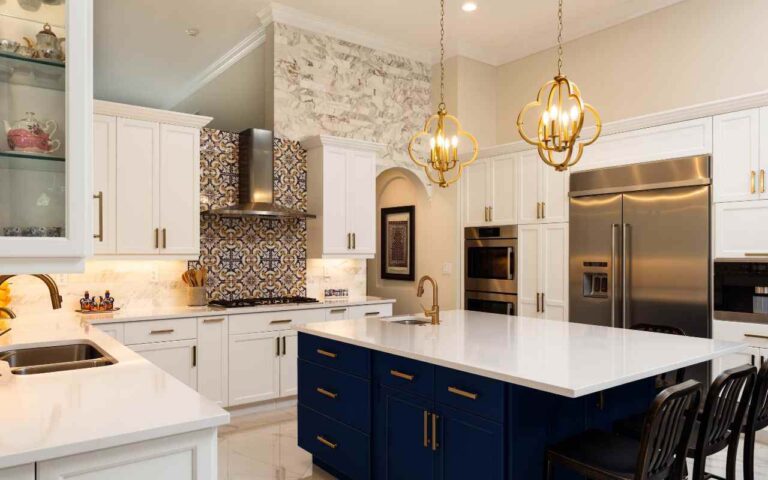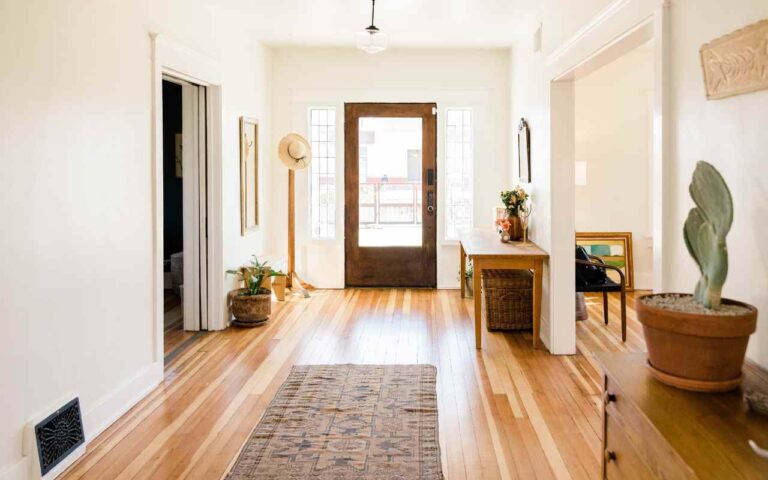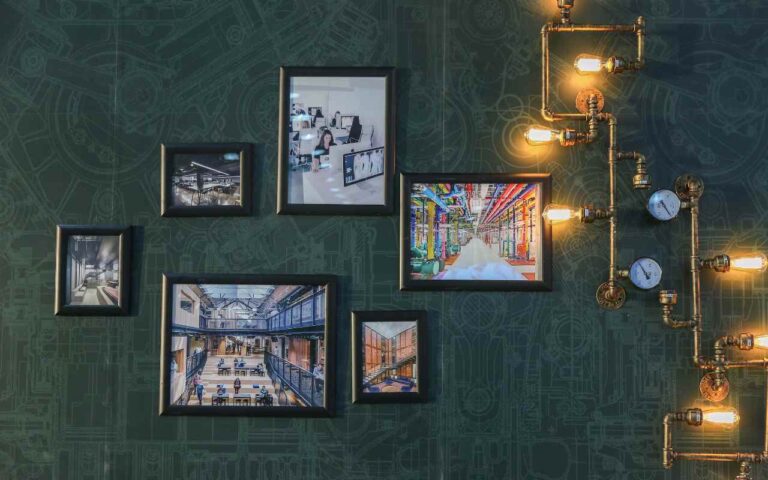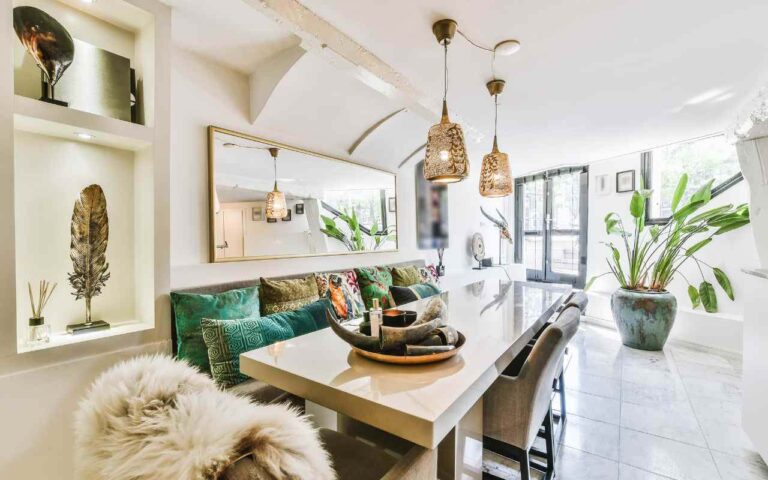Ever walked into a room and felt instantly at ease, without really knowing why? Chances are, the lighting design played a major part in creating that ambience. Lighting design, an often overlooked yet crucial aspect of architectural planning, influences not only the aesthetics but also the functionality and energy efficiency of a building. This article shines a spotlight on the role and evolution of lighting design in Australian architecture, provides a guide on its key elements and techniques, and showcases some local case studies.
What is Lighting Design?
Lighting design refers to the process of developing a lighting scheme for an indoor or outdoor space. It’s more than just picking out a fancy lamp or installing a bunch of downlights. It requires careful consideration of the space’s function, aesthetics, and the psychological impact of light on the occupants.
Why is Lighting Design Vital in Architecture?
The Importance of Lighting Design in Architecture cannot be overstated. It’s a design element that can make or break the success of a project. Great lighting design enhances architectural features, improves functionality, and contributes significantly to the overall ambience. It can also play a crucial role in supporting sustainability and energy efficiency goals.
The History of Lighting Design in Australia
While our ancestors simply relied on sunlight and fire for illumination, Australian architects today have a vast array of lighting technologies and techniques at their disposal. Over the years, the approach to lighting design has evolved from simple utility to an artistic discipline, all the while keeping pace with technological advancements and changing societal values.
Why Should You Care About Lighting Design?
Well, as we mentioned earlier, the right lighting can transform a space, setting the mood and ensuring the place works for its intended purpose. Whether you’re an architect, designer, or homeowner planning a building or renovation project, understanding the basics of lighting design is paramount. It can also assist you in making sustainable choices for your project.
The Elements of Lighting Design
Let’s dive a bit deeper into the nitty-gritty of lighting design. Understanding its primary elements can help you make informed choices about the best lighting for your space.
Light Source: Types and Applications
From natural sunlight to artificial lights like incandescent, fluorescent, LED, and beyond, different light sources serve different purposes. For instance, sunlight, the most natural light source, is a key factor to consider when working on the building’s layout and window placement. Artificial lights, on the other hand, offer flexibility in terms of intensity, directionality, and colour temperature.
Light Fixtures: Types and Applications
Light fixtures hold the light source and determine how it illuminates the space. Recessed lights, track lights, pendants, chandeliers, wall sconces, and table lamps are just a few examples of the myriad fixtures available. Each type serves a specific function – from ambient and task lighting to accent lighting – and can enhance a space’s aesthetic appeal.
Light Control: Types and Applications
Controlling how, when, and where light is dispersed in a space is just as important as choosing the light source and fixture. Light controls such as switches, dimmers, timers, and motion sensors can help modify the light intensity and usage as required, adding to the functionality and energy efficiency of a building.
Colour Temperature: Its Importance
Colour temperature, measured in Kelvins, refers to the warmth or coolness of light. Warmer light, towards the lower end of the Kelvin scale, is often used in residential spaces to create a cosy and relaxing ambience. Cooler light, on the higher end, is common in commercial and educational spaces, promoting alertness and productivity.
Choosing the Right Lighting Design Elements
Choosing the right lighting elements for your building depends largely on the function of the space, the desired ambience, energy efficiency goals, and aesthetic preferences. For example, if you’re planning a living room that doubles as a reading area, you’d probably go for a mix of ambient lighting from ceiling fixtures, task lighting from floor lamps, and accent lighting to highlight Australian wall art or other features.
Lighting Design Techniques
Having explored the elements of lighting design, let’s now look at some popular techniques used to create well-lit spaces. These can significantly influence the way a space feels and functions.
Layering: Types of Layers in Lighting Design
Layering is all about combining different types of light to enhance a space’s functionality and aesthetic appeal. Ambient light provides the base layer, setting the overall light level in a room. Task lighting supports specific activities like reading or cooking, while accent lighting is used to highlight architectural features or artwork. The trick is to balance these layers to create a versatile and inviting space.
Contrast: Its Importance in Lighting Design
Contrast in lighting design helps create visual interest and depth. It’s all about the interplay of light and shadow, which can be used to highlight or conceal architectural elements. However, too much contrast can lead to harsh shadows, so it’s important to get the balance right.
Directionality: Its Importance in Lighting Design
Directionality refers to the way light is cast from a fixture. It can be direct, as in the case of a spotlight, or indirect, such as light reflected off a wall or ceiling. The choice between direct and indirect lighting depends on the space’s requirements and the desired atmosphere.
Uniformity: Its Importance in Lighting Design
Uniformity in lighting ensures consistent illumination across a space. While it’s important for functionality and safety, a too-uniform lighting scheme can appear bland. Thus, it’s often combined with other techniques to create visual interest.
Applying Lighting Design Techniques
Applying these techniques can turn your space from drab to fab. However, the choice of technique largely depends on the building type and function. For instance, layering works well in residential spaces, while uniformity is crucial in workplaces for task efficiency. To further your understanding, have a look at these Lighting Design Techniques for Different Building Types.
Lighting Design in Australian Architecture: A Glimpse at Case Studies
They say a picture paints a thousand words. Well, in this case, we’re going to look at some of Australia’s iconic architectural wonders to see how they’ve harnessed the power of lighting design.
Sydney Opera House: Lighting Design Highlights
The Sydney Opera House, with its distinctive sail-like shells, is a perfect example of how lighting can accentuate architectural features. The exterior lighting emphasises the shape and texture of the shells, making it a stunning spectacle at night. The interior lighting, meanwhile, combines functionality and aesthetics, providing an unparalleled theatrical experience.
Crown Towers Perth: Lighting Design Highlights
Lighting design at the Crown Towers in Perth illustrates how it can enhance the luxury and sophistication of a space. Elegant pendant lights, recessed lighting, and illuminated wall features work in harmony to create a warm, welcoming, and plush atmosphere throughout the hotel.
Melbourne Museum: Lighting Design Highlights
At the Melbourne Museum, lighting design is used not just for aesthetics but also to guide visitor flow and highlight exhibits. Innovative techniques, such as fibre optic lighting and programmable LED systems, ensure the exhibits are lit appropriately while minimising damage from heat and UV radiation.
These examples illustrate the transformative power of lighting design and its ability to support architectural intent. As you plan your building project, consider the lighting as an integral part of the design process, rather than an afterthought. And remember, the space planning importance also plays a significant role in creating an efficient and functional space.
Current and Future Trends in Lighting Design in Australia
Just like fashion, lighting design trends evolve with time, driven by technological advancements, environmental concerns, and changing lifestyle needs. Let’s have a look at some current and future trends that are shaping the landscape of lighting design in Australia.
Smart Lighting: Benefits and Applications
Smart lighting, powered by IoT (Internet of Things), is gaining popularity for its convenience, energy efficiency, and customisability. With features like remote control, programmability, and automation, smart lighting systems allow homeowners to personalise their lighting based on their needs and preferences.
Sustainable Lighting: Its Importance
With the increasing emphasis on sustainability and energy conservation, sustainable lighting solutions are a significant trend. These incorporate energy-efficient light sources, natural daylighting strategies, and smart controls to minimise energy use. Check out this guide on sustainable lighting solutions for more details.
Human-Centric Lighting: Its Importance
Human-centric lighting is an innovative approach that aims to improve health, well-being, and performance by aligning lighting with the body’s natural circadian rhythms. By varying colour temperature and light intensity throughout the day, such systems can support sleep-wake cycles and enhance productivity and well-being.
Embracing Lighting Design Trends
Staying abreast of the latest trends can help you make informed decisions about your building’s lighting design. Whether it’s embracing smart technology, committing to sustainability, or prioritising human well-being, these trends offer exciting possibilities for future-proofing your lighting design.
Conclusion
In the play of architecture, lighting design is a star performer. Its role extends far beyond mere illumination, impacting the aesthetics, functionality, and energy efficiency of a building. We’ve journeyed through its significance in Australian architecture, explored its elements and techniques, and seen its power in action in some iconic local buildings. We’ve also delved into the trends shaping its future.
Lighting design, when done right, can transform a space, set the mood, and make it functional and efficient. As we’ve seen in the case studies, it can highlight architectural features, guide user behaviour, and create spectacular night-time images. And with trends like smart lighting, sustainable solutions, and human-centric design, the future looks bright for this exciting field.
If you’re embarking on a building or renovation project, consider lighting design as an integral part of your planning process. Think about how you can combine different light sources, fixtures, and controls to create a versatile and pleasing environment. Remember the role of space planning, consider how you can layer lighting, create contrast and directionality, and maintain a comfortable level of uniformity. And don’t forget to keep an eye on emerging trends, as they offer opportunities for innovation and improved sustainability.
With all these insights, you’re now equipped to shine a light on your next project. Lighting design can seem complex, but with a thoughtful approach and a keen eye for detail, you can create spaces that are not only well-lit but also inviting, functional, and energy-efficient. So go ahead and make your space a beacon of great lighting design!











+ There are no comments
Add yours